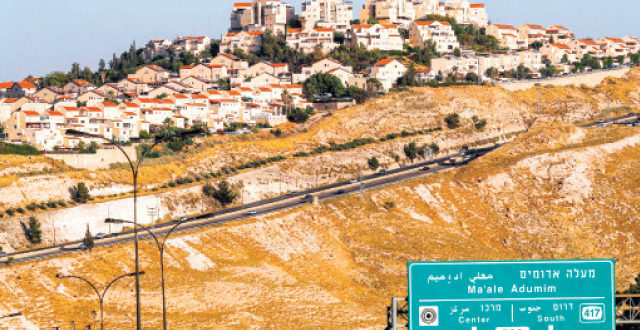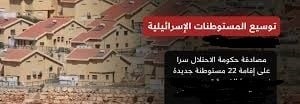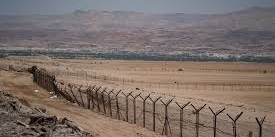By: Madeeha Al-A’raj
The National Bureau for defending land and resisting settlements ( nbprs ) stated in its latest weekly report , that Israeli District Planning and Construction Committee in Jerusalem approved a plan to build 730 settlement units in the “Psgat Ze’ev settlement” that was built on the Beit-Hanina lands, in addition to a plan that includes 21,000m2 for trade and employment, and 41,000m2 for public buildings, as well as, 16 dunams of open space. Another plan of 17 donums on Jaffa Street was also approved to build 850 housing units in 4 towers consisting of 40 floors, of which 170 were allocated for small apartments and long-term rentals, 14,350m2 for hotels, 58,500m2 for offices, and 6,600m2 for trade.
As for the third plan, it will be implemented in “Kiryat Yearim” by constructing 2 complexes on a total area of 18 dunums that include 210 housing units in 9 buildings, and 6000m2 allocated for public buildings, a large school and a synagogue, about 3660m2 for trade and employment, and 4.5 donums open public areas, including a public garden of about 3 donums.
For its part, the occupation municipality and the Ministry of Infrastructure revealed a plan to expand settlements to the south of the occupied Jerusalem, linking them to the “Kfar Etzion Bloc” in the southern West Bank, and connecting it with the water and sewage system, and the network of roads and tunnels that have been built for more than 2 years. The plan, which was approved in the first reading, and settlement neighborhoods were added to it, includes about 4,639 settlement units during the next 5 years, and they are concentrated in the southern axis adjacent to the municipal boundaries of Jerusalem.
The occupation government also signed an agreement to establish a huge Judaization center on the Mount of Olive – At-Tur. The signing of the agreement came after a decade of intense activity, which included discussions and promotion of programs and plans to implement the construction of a visitor’s center and an information center there. The agreement was signed in the presence of the Israeli Minister of Jerusalem and Heritage Ze’ev Elkin, and the Mayor of Jerusalem Moshe Lion, in addition to the head of the International Committee for the Protection of the Mount of Olives (a Jewish organization operating abroad) Menachem Lubinsky.
The building will include an information center that talks about “Jews buried in the mountain over thousands of years of Jewish history,” according to the occupation government’s allegations. The center will also include a synagogue, a training center, libraries and ticket shops, an auditorium, a map and cemetery research institute, and monitoring center.
Minister, Elkin commented on the signing of the agreement by saying, “The connection with Jerusalem begins here on the Mount of Olives. We will invest great resources in developing the Mount of Olives, whether as a tourist anchor or to improve security.” For his part, Lubinsky revealed that the idea of building on the Mount of Olives came to stop the Arab invasion of the Mount. On Feb. 20th, the Hebrew newspaper “Times of Israel” revealed the Israeli government’s willingness to move forward with a settlement plan, which it described as unprecedented and given the number 101-674788 that would expand the borders of a park called “Jerusalem National Walls” to include a part of it.
A large part of the Mount of Olives overlooks the Old City of the occupied Jerusalem, along with other additional parts of the area, at the expense of lands owned by the Church, and is considered one of the holy places for Christians.
In Jerusalem, Israeli companies also started construction works on large areas to implement the “Al-Buraq Elevator” Judaization project that includes the construction of two contiguous vertical elevators with a height of 26 meters, as well as the construction of an underground tunnel with a length of 70 meters and a 14m width between Al-Sharaf neighborhood in the old city and Al-Buraq Square, adjacent to Al-Aqsa Mosque, under the pretext of facilitating the movement of settlers and tourists.
On the other hand, the Israeli Peace Movement issued a recent calling for the need to put an end to the settlers’ attacks, and not to interfere with the extreme right-wing political elite, which has a solid core in the Israeli Knesset. The report said that the hard core of the military arm in the illegal settlement outposts in the occupied West Bank is supported by a political arm in the Knesset and by certain well-known personalities, who support activities targeting defenseless Palestinians.
The map of points of violence indicates a direct relationship between the establishment and expansion of illegal settlement outposts, and the acts of violence by settlers and that over the years more and more dangerous attacks have been witnessed, where red lines have been crossed, and that those outposts meet with governmental political plans aimed at expanding settlement projects and seizing more Palestinian lands. These outposts are partially inhabited by extremist settlers, and are characterized by a continuous effort to expand them and seize more and more lands to achieve these goals.
List of Israeli Assaults over the Last Week Documented by the National Bureau:
Jerusalem:
- Forcing 2Jerusalemites to demolish their homes in the Beit Hanina town, and threatening them to pay tens of thousands of shekels for the cost of the demolition if they do not do that themselves.
- Notification to demolish a barracks in the Abu Al-Nawwar Gathering on the pretext of not having a permit.
- Demolishing a house in Shuafat Refugee Camp, northeast of Jerusalem.
Hebron:
- Uprooting and breaking 300 olive and almond trees from the “Dilal Al-Adra” area, east of Yatta.
- Attacking shepherds in the Masafer Yatta while they were grazing sheep in Tuwani village, and stoned them.
- Seizing 2 water pumps and electricity cables, and the destruction of water pipes and tanks in the Bedouin Community of “Um al-Daraj” east of Yatta.
- Notification to stop work and construction in 5 houses belonging to citizens, demolishing a 100-meter building in the Khallet al-Eida area, along the bypass road east of Hebron, carried out excavation and construction works in the courtyards of the Ibrahimi Mosque and laid a ground iron grid in preparation for construction in the garden
Bethlehem:
- Storming the “Bardmo area”, east of Battir, between the Al-Qusayr and Al-Khimar areas, and razing and erecting a large tent 40m long and 10m wide, in addition to a caravan on a 23 dunums of land, the owners of which have official papers “Tabu” on it, and the occupation prevents its owners from reclaiming it.
- Notification to stop performing prayer in the Al-Hamidiyah Mosque in the Al-Khader town, south of Bethlehem, or carrying out restoration work in it or lands near it, claiming that it is an archaeological area, and another notification requires the removal of all the olive seedlings that were planted in the land near it a week ago, amounting to more than 400 seedlings.
Nablus:
- Land plowing to expand the settlement of “Majdolim” and the construction of a road 50 meters away from the settlement.
- Starting to construct a new outpost on the lands of Qaryut, south of Nablus.
- Placing concrete cubes on the main road between the towns of Burqa, and Silat al-Dhahr, Jenin Street – Nablus, near the evacuated settlement of Homesh, under the pretext of providing protection and guarding for settlers.
- Uprooting 80 olive seedlings from the lands of Duma village, south of Nablus.
- Damaging tires of 15 vehicles, wrote racist slogans on the walls of houses in the village of Qaryut.
Salfeet:
- Uprooting and stealing about 190 olive trees and sabotaging an agricultural room and its contents in the Khallet al-Qamh area in the town of Kafr al-Dik, and they stole 40 olive seedlings.
- notices to stop construction in 3 houses in Kafr ad-Dik on the grounds that it is located in Area C.
- Uprooting grape seedlings, demolishing stone chains, and cutting and damaging 150 m of barbed wires from the land of Sa’adat Taher Saeed in the Um Hanun area, north of the town.
Jordan Valley:
- Dismantling the vegetable stands located on the road called 90 in the northern Jordan Valley, and seizing them and their goods belonging to citizens from the villages of Kardala, Bardala and Ain al-Bayda.
- Storming the lands of citizens in the Beyarat Saud area, east of Tubas, and the settlers erected a tent in the place.
 المكتب الوطني للدفاع عن الارض ومقاومة الاستيطان منظمة التحرير الفلسطينية
المكتب الوطني للدفاع عن الارض ومقاومة الاستيطان منظمة التحرير الفلسطينية




